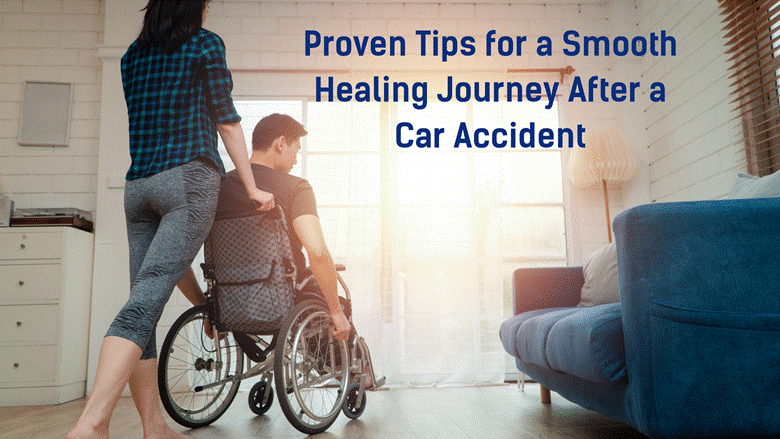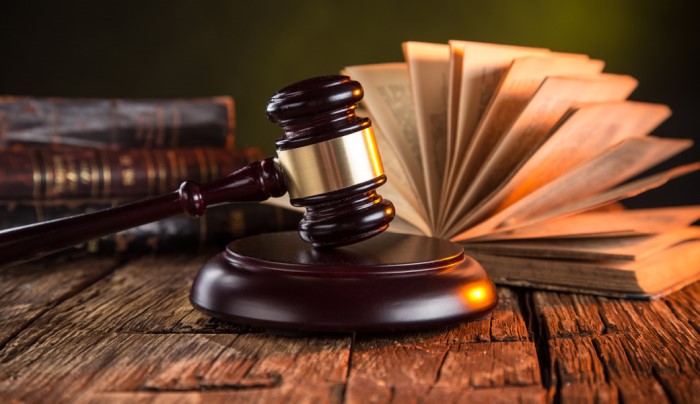Experiencing a car accident can be traumatic, both physically and emotionally. While each person’s recovery journey is unique, adhering to medical advice and implementing certain lifestyle changes can help smooth the healing process. This guide dives into proven tips for recovering from a car crash, addressing critical aspects like rest, hydration, exercise, nutrition, and emotional health.
Imagine you’re cruising down the road, minding your own business, and then suddenly, BAM! You’re in a car accident. It’s not just a dent in your car; it’s a jolt to your whole life. You might feel hurt, both in your body and in your heart.
But don’t worry. You are not alone. We’re here to guide you through the bumpy journey of recovery. We’ll share some tips that real people like you have found helpful after a car crash. It’s like having a friendly hand to hold as you navigate this challenging road.
So, let’s buckle up and explore how to heal your body and spirit. We’ll talk about getting enough rest, keeping yourself hydrated, doing gentle exercises, eating right, and caring for your emotional well-being. It’s all part of the journey, and we’re here to help you every step of the way.
The Importance of Following Medical Advice
The most critical component of recovering after a car accident is closely following the guidance of medical professionals. They can provide tailored advice and treatment plans based on the injuries sustained.

Experiencing a car accident can be traumatic, and knowing what steps to take afterwards is essential. One crucial action is seeking the counsel of a personal injury lawyer. But before we delve into the advantages of consulting with a personal injury attorney, let’s outline the list of crucial actions a person should consider after a car accident.
After a car accident, it’s vital to:
- Ensure Safety: First, ensure everyone involved in the accident is safe. If there are injuries, seek immediate medical attention.
- Contact Authorities: Report the accident to the police and file a formal report.
- Exchange Information: Exchange contact and insurance information with the other parties involved.
- Gather Evidence: If possible, gather evidence at the scene, such as taking photos of the accident, damage, and road conditions.
- Seek Medical Care: Even if you don’t feel seriously injured, seeing a healthcare professional is advisable. Some injuries may not manifest immediately but could worsen over time.
- Notify Insurance: Inform your insurance company about the accident.
- Preserve Records: Keep records of all medical bills, repair costs, and other expenses related to the accident.
Now, let’s explore the advantages of consulting with a personal injury lawyer.
Consulting a personal injury lawyer after an accident in Myrtle Beach offers vital benefits, including legal expertise, negotiation skills, and the ability to pursue compensation for medical bills, pain, suffering, and more. A personal injury lawyer myrtle beach can navigate the intricacies of local laws and regulations, ensuring that your rights are protected and your case is presented effectively. With their deep understanding of the legal landscape in Myrtle Beach, these professionals can advocate on your behalf, aiming to secure the compensation you deserve for the challenges you’ve faced.
Following doctor’s orders might mean using crutches even if you feel ready to walk unassisted. It could require attending physiotherapy consistently, even if you can exercise alone. You should avoid strenuous physical activities and limit hours at work against your wishes.
However, these expert recommendations are designed to ensure that injuries heal fully. Attempting too much, too soon, often backfires and causes setbacks. Trust that your care providers have your best interest in mind.
Doctors may recommend specific stretches and exercises to improve recovery. For example, they often prescribe gentle neck exercises to relieve muscle tension after whiplash injuries. When performed correctly, these exercises can aid healing without overexerting the body.
It is tempting to self-diagnose and resort to home remedies for pain relief after an accident. But avoid using heating pads, topical ointments, or unprescribed medications without your doctor’s approval. These could negatively interact with treatment plans or medications prescribed for a specific condition.
Seeking second opinions can provide reassurance, but resisting or delaying treatment altogether can have severe consequences. For example, waiting too long to realign a bone after a fracture could lead to permanent loss of function. Trust medical experts to make appropriate judgments regarding your health.
Adhering to expert advice in the initial recovery stage lays the optimal foundation for full recuperation. While the limitations feel uncomfortable initially, staying the course will pay off. Your body will mend and grow stronger with patience and commitment to medical care.
The Power of Rest and Hydration
Rest allows the body to direct its energy toward healing damaged tissue and bones. Adequate sleep and avoiding overexertion are vital, especially immediately after an accident.
Lack of sleep can impair cognitive function, reduce alertness and negatively impact short-term memory. Allowing proper rest activates the body’s natural repair mechanisms. Don’t be tempted to rush back to work or normal routines before your body is ready.
Proper hydration is equally important. Water supports every function in the body and is vital for recovery. Dehydration causes fatigue, confusion, and drowsiness – states that can inhibit healing. Drink at least 2 liters of water daily and avoid caffeinated or alcoholic beverages with a diuretic effect.
Chiropractic Care for Injury Recovery
Chiropractic treatments can provide immense relief from common post-accident injuries like whiplash, neck pain, back injuries and headaches. Chiropractors use spinal manipulation and neck adjustments to improve mobility, reduce nerve compression and support the body’s natural healing ability.
Studies show chiropractic care results in significant pain reduction and improved range of motion. A paper in the Journal of Manipulative and Physiological Therapeutics found that chiropractic adjustments reduced chronic neck pain by 50% more than standard medical care. Chiropractors can also recommend rehabilitative exercises tailored to each patient.
Consult your medical provider before starting chiropractic treatment after an accident. While usually very safe, some techniques may need to be avoided until certain injuries have healed.
The Role of Exercise in Recovery
Once cleared by your doctor, gentle exercise can aid the post-accident healing process. Start with basic stretches or walking to improve mobility, flexibility, and circulation. Light cardio accelerates blood flow to injured areas, reducing swelling and delivering nutrients vital for repair.
Introduce aerobic exercise and strength training slowly. Low-impact options like swimming, cycling, or yoga are ideal. Alternate exercise days with rest to avoid overexertion. Listen carefully to your body, and don’t push beyond your limits. A physical therapist can guide safe, beneficial exercises tailored to your condition.
Physiotherapy for Treating the Body Holistically
Physiotherapy takes a whole-body approach to healing without medication. Sessions may include:
- Targeted exercises to improve mobility and flexibility.
- Manual therapy like massages and joint manipulation.
- Pain relief techniques such as ultrasound and electrical stimulation.
- Advice on posture, lifting and cradling.
Studies demonstrate physiotherapy’s effectiveness for car accident injuries. A research review in BMC Musculoskeletal Disorders showed that manual therapy and exercise provided by physiotherapists reduced rehabilitation time and long-term pain and disability.
Seek a licensed physiotherapist to develop a personalized recovery plan. Multiple weekly sessions are often needed, especially immediately after an accident. Be patient through this process – a rushed approach can aggravate injuries.
Nutrition’s Role in Healing
Eating nutrient-dense whole foods supports the healing process from the inside out. Protein provides the building blocks for regenerating muscle and tissue. Foods high in vitamins A, C, and zinc also boost recovery.
| Nutrient | Function |
| Protein | Repair muscle, skin, and tissue |
| Vitamin C | Form collagen, boost immunity |
| Zinc | Increase cell reproduction, immunity |
| Omega-3s | Reduce inflammation |
According to sports medicine experts, a balanced diet with fruits, vegetables, healthy fats, and plant-based proteins can potentially expedite healing by up to 25%. Avoid sugar, excess salt, processed foods, and alcohol which can prolong inflammation.
Staying hydrated is also key. Aim for 2-3 liters of water daily. Coconut water, fruit-infused water, and herbal teas are hydrating options. Proper nutrition gives the body the resources to function optimally during recovery.
Exercising Patience in the Healing Journey
Each body heals differently – patience is key. Allow sufficient time for medical interventions, physiotherapy, chiropractic treatments, and lifestyle changes to take effect.
Resist the temptation to overexert yourself or rush back to work before your body has fully recuperated. Gradual return to normal activities based on medical guidance can help avoid reinjury.
Trust the process. Minor setbacks or plateaus are normal. Persistence with aftercare and a healthy lifestyle will facilitate healing over time. Let your body’s repair mechanisms work. With patience and adherence to expert advice, you will get back to full strength.
Addressing Emotional Trauma
Alongside physical recovery, be mindful of the emotional trauma often accompanying car accidents. The experience can trigger anxiety, sleep disturbances, anger or depression. These feelings are normal, but ignoring them impedes overall healing.
Seeking counseling or joining support groups can help process traumatic memories. Therapeutic techniques like mindfulness, meditation and journaling are also beneficial. Opening up to trusted friends and family provides an emotional release and reminds us that
we don’t have to cope alone.
Ultimately, be kind to yourself throughout the recovery journey. Each step forward is progress. Stay motivated, dreaming of the finish line — healthy and whole once more.
Conclusion
Healing from any car accident requires time and commitment. With diligent adherence to medical advice, proper rest, nutrition, and emotional support, you can smooth the process and get back to full physical and mental health. Trust your care providers, listen to your body and be patient through temporary setbacks. Acknowledge each small win. Before long, you’ll be enjoying your favorite activities again, armed with a new appreciation for wellness.




